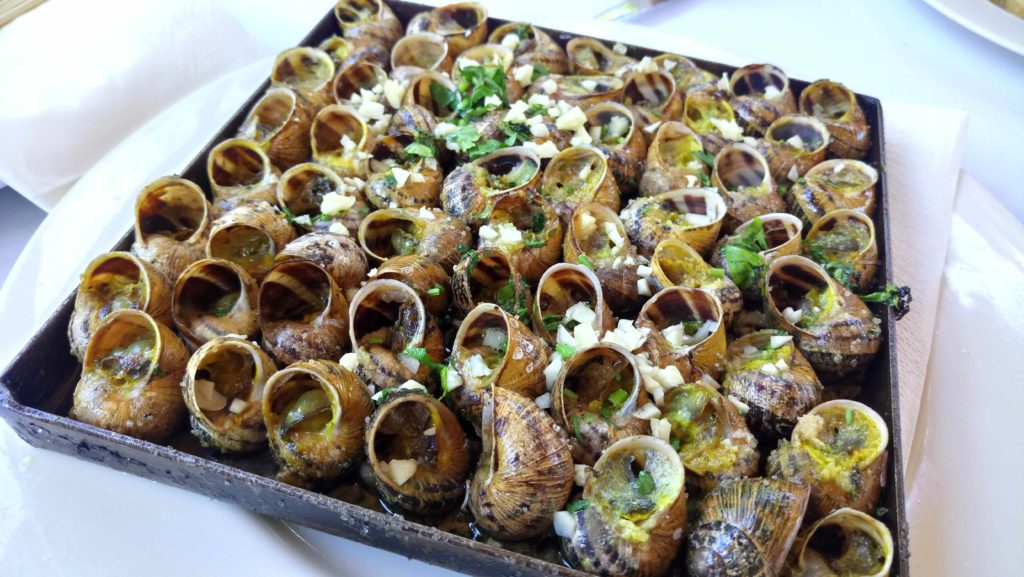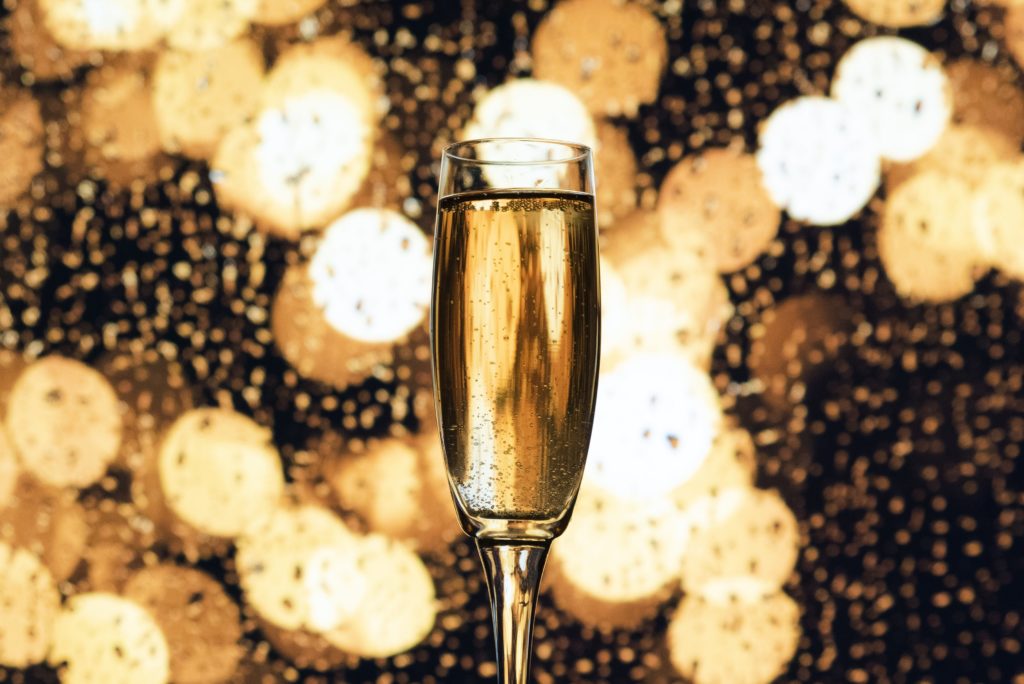Recently my toddler was out in the garden, and as all curious toddlers must, he picked up a passing snail and put it into his mouth.
“No!” I cried, pulling something slimy and half munched from his mouth. “We don’t eat snails!”
Well actually, if you live in France, you do.

So why are so many people eating snails in France? If you’re a tourist, you are more than likely to see escargot on the menu and try it for the novelty of telling your friends at home that you ate snails. If you live in France you will probably prepare escargot à la Bourguignonne for your Christmas Eve dinner.
Ancient snails
The eating of snails is nothing new. Snail shells were found in an archaeological dig in the Benidorm area of Spain, dating to around 30,000 years ago, and there are many other paleolithic sites around the Mediterranean containing roasted snail shells.

The Romans are known to have enjoyed snails as a delicacy, and raised them in snail farms. They fed the lucky snails wine and barley to make them just that little bit more delectable. In fact, some historians believe the Romans introduced the eating of snails to France when Julius Caesar invaded in 58 BC (though archaeological evidence has snails in the south of the France for at least 6000 years). The remains of roasted snail shells have also been found in Roman ruins in Provence.
In the middle ages the monasteries took advantage of the popularity of eating snails in France and had a monopoly on raising snails on escargotières or snail farms (they also had a monopoly on vineyards for wine!). The Catholic church even proclaimed that escargots were a kind of fish so that people would still eat them on Fridays and during Lent, when meat was forbidden.

Should you need cooking advice in 1393 after catching your snails, Le Ménagier de Paris was your go-to guidebook:
Limassons, also called escargols (escargots), need to be collected in the morning. Take small, young snails with black shells from the vines or the garden, then wash them in water until they have stopped oozing. Then wash them once in salt and vinegar, and cook them in boiling water. Remove the snail from the shell with a needle or a pin, then you must cut off the tail which is black. Wash again, place in boiling water until cooked. Serve the snails on a plate or ladle to be eaten with bread. Alternatively, they are better fried with onion in oil or another liqueur, after which you eat them à la pouldre. This method is for the rich people.
Turtles, snails, frogs and artichokes
In 1543, Étienne de Laigue wrote a small book called “Noteworthy Treatise Concerning the Properties of Turtles, Snails, Frogs and Artichokes”. A bestseller? Probably not. He was not the only person to find the eating of these animals to be strange, but I’m not quite sure why the artichoke, being a vegetable, should be so offensive.

Laigue lauded the medicinal properties of snails and limaces (slugs), noting that they were beneficial for curing stomach illnesses. He wrote:
I know snails are ugly, but not so hideous as turtles, nor so vile, and nothing like as poisonous; I also know that the ancients ate them, but I can’t accept people’s eating them daily, since other foods are more nourishing and of better substance.
Laigue was not the only person to find the eating of snails to be distasteful, and the popularity of escargots started to decline around this time, until snails disappeared off the menu altogether.
Oyster snails
It is likely, however, that they were still consumed in various parts of France, including the Champagne and Lorraine regions in the north east of France.

Troyes, a city in the Champagne region, had a reputation for the finest escargots, which were actually referred to as hûitres champenoise (champagne oysters).
There is not a traveler passing through Troyes in winter, who leaves this city without having tasted at least a few dozen of our oysters on land.
The Journal of Agriculture, 1872
The return of the snail
In May 1814, not long after the fall of Napoleon, the Tsar of Russia Alexander I made an official visit to France. He was received by Charles-Maurice de Talleyrand-Périgord who was the foreign minister under Louis XVIII who had just made his own comeback as monarch after years of exile. Talleyrand was fortunate to have in his employ one of France’s best chefs, Marie-Antoine Carême.

To impress the Tsar with something he had likely never eaten before, Carême prepared escargot à la Bourguignonne, or Burgundy snails. Escargots, butter, garlic, parsley. The tsar was completely enraptured by the simple yet delicious dish.

And voila, snails were back on the menu in Paris. Eating snails in France became extremely popular.
Things to know about snails
Can you eat the snails in your garden? No. Please don’t.
Instead, watch my video where I visit the ferme de Fanon where they raise and sell snails for eating.
Not all snails are edible, and some are poisonous because of what they may have eaten in the garden. The ones which are edible are born and raised on special snail farms. They need to be purged and cleaned and usually cooked before they can be eaten.


You could take the advice of this 1899 advertisement in which snail syrup is recommended to relieve all the symptoms of the common cold – a runny nose, coughing, sore throat and chest infection.
Eating snails in France today
Julia Child, in her Mastering the Art of French Cooking, recommends this flavoured butter for your snails:

But there are many other ways you can enjoy your escargots. Baked with brie; in a white wine and cream sauce; in a puff pastry; add them to your paella; make a snail salad.
And if you like caviar but are tired of the same old beluga, snail caviar is now a thing! It’s also known as escargot caviar or escargot pearls. These snails’ eggs are considered a rarity and a luxury, and are more expensive than farmed back caviar.

So, have you eaten snails in France and lived to tell the tale? Write a comment below and tell me!
Useful links
This is the link to the ferme de Fanon where I purchased some very delicious snails.
One of the most popular snail restaurants in Paris is L’Escargot, where you can still go today and enjoy the best snails in Paris.
If you are looking for a challenge, this recipe for snail bonbons by Laurie Gear is sure to provide you with one!
Did you buy some snails but now you’re not sure which wine to pair them with?



